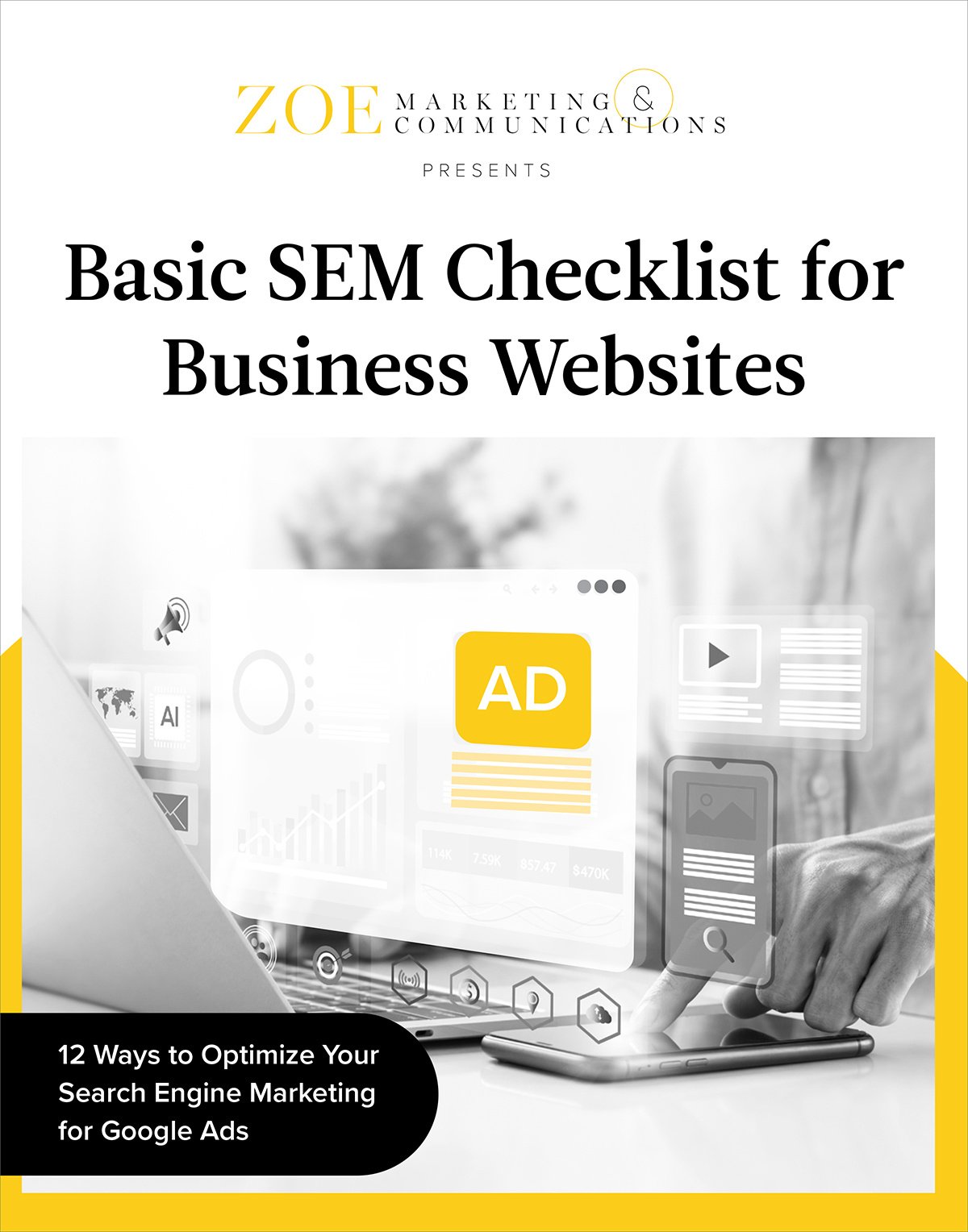
Download Your Basic SEM Guide
Learn how Google Ad Grants can support your nonprofit’s digital strategy, from eligibility to the application process and tips for maximizing yours.
Topics:
November 21st, 2023 | 2 min. read
By Kim Kovelle

Imagine you’re searching for a financial advisor in Lexington, Kentucky. You Google “financial planning near me,” and up pops an ad that says:

It grabs your attention, right? That’s the power of solid search engine marketing or SEM ads, which rely text.
But many small- and mid-sized businesses struggle to get it right. Poor copy can hurt your click-through rate (CTR) and leave your ads floundering.
Here at Zoe Marketing & Communications, we’ve helped clients turn their ads around with sharper, more effective messaging. In this article, we’ll show you how to elevate your SEM ad game with clear examples and actionable best practices.
Discover 12 essential steps to optimize your search engine marketing to attract more prospective clients on Google.
At its core, SEM ad copy is text that appears at the top of search results, urging people to click. It’s labeled as sponsored. And, typically, you have limited space to make an impact.
Each piece should work together to convince someone to click — and ultimately take action.

Let’s break down five essential tips for writing stronger SEM ads that drive results.
Instead of listing everything you offer, speak to your audience’s desires and challenges. Address the “why” to connect emotionally. Here’s an example for an autism therapy center:
The second example emphasizes the life-changing impact, appealing directly to parents’ hopes and concerns.
Motivate readers to act by using powerful verbs and urgency. For a tourism agency, action-oriented language could look like:
The strong version invites readers to explore and sparks curiosity, while the weak one is straightforward but bland.
If you have awards, certifications or stats that back up your claims, include them in your ad copy. This builds trust and reassures potential customers. For example, a roofing company could say:
Trust signals reduce hesitation and make your claims more believable.
Running multiple versions of your SEM ads is essential to find what resonates most with your audience. Try different headlines and descriptions, then track metrics like click-through rate (CTR) and conversions.
Example test headlines:
Compare which version drives more clicks and adjust accordingly.
With limited space, every word in SEM ad copy matters. Avoid filler phrases and focus on concise, impactful language. For a school, here’s how brevity works:
The compact example communicates the value clearly and quickly, increasing the chances of a click.
Crafting SEM ad copy that works takes practice. But focusing on value, using clear language and building trust can help you connect with your audience and improve results.
Need expert guidance? Talk to Zoe Marketing & Communications about building your next SEM campaign. Or check out these related articles:

Learn how Google Ad Grants can support your nonprofit’s digital strategy, from eligibility to the application process and tips for maximizing yours.
As Zoe Marketing & Communications’ content manager, Kim Kovelle brings over 20 years of writing and editing experience in metro Detroit. She has strong roots in community journalism and a knack for making complicated topics make more sense.
Topics:
